Some animals wear armor that would put medieval knights to shame. These aren’t just shells—they’re evolutionary engineering marvels made to survive crushing pressure, predatory bites, and even car tires. From tiny ocean grazers with iron-hard teeth to beetles that can survive being run over, we’re counting down the toughest shells in the animal kingdom, packed with the wildest facts, insane strength stats, and natural secrets behind their indestructibility.
12. The Giant Clam – The Underwater Vice That Could Crush Your Arm

The giant clam doesn’t flee danger—it simply hunkers down inside a fortress that weighs over 500 pounds. Found across Indo-Pacific coral reefs, these colossal bivalves can grow more than four feet long, their thick shells built from tightly packed layers of calcium carbonate fused with protein to resist fracture. Those fluted, rippling ridges aren’t just for show: the design helps absorb shock from coral debris, predator strikes, or even ocean floor movement. These ancient mollusks stay rooted for life, relying on this one evolutionary masterpiece to endure the chaos of the sea.
What truly sets them apart is the crushing force of their close. Fueled by massive adductor muscles, they slam shut fast enough to startle sharks and snare curious sea stars. In a structural analysis published in Materials Science and Engineering: A, researchers found that the outer shell layers can withstand over 17,000 psi, comparable to the pressure required to crack high-grade concrete. That resilience is one reason communities from the Philippines to Polynesia have repurposed giant clam shells as fountains, baptismal basins, and even outdoor bathtubs. When nature builds a tank, it doesn’t cut corners.
11. The Coconut Crab – Claws That Crack Coconuts, Armor That Defies Nature
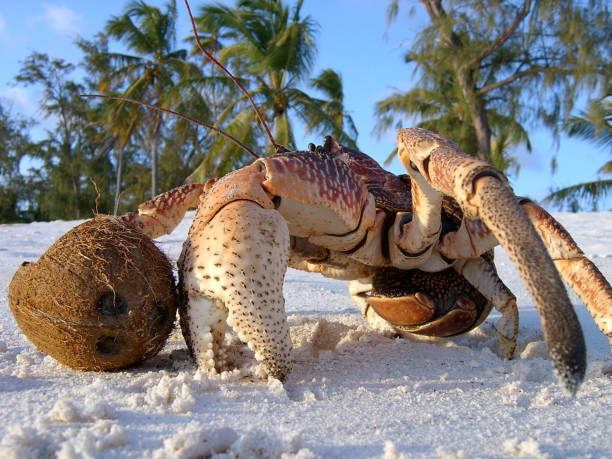
Coconut crabs don’t just look prehistoric—they live like it. These massive, land-dwelling crustaceans can weigh up to 9 pounds and span nearly three feet across, making them the largest terrestrial arthropods on Earth. Their exoskeletons are thick, mineralized suits of armor composed of chitin reinforced with calcium carbonate, allowing them to scale cliffs, scuttle over volcanic rock, and escape most predators unscathed. The structure of their segmented shell not only resists impact but also supports the enormous muscle mass needed for their signature move: splitting coconuts bare-handed—or rather, bare-clawed.
It’s not just a party trick. Researchers studying Birgus latro in a biomechanical analysis published in PLOS ONE found that a single claw can deliver over 3,300 newtons of force—that’s more than 740 pounds of pressure, stronger than most large dog bites and easily capable of cracking bone. This kind of crushing power wouldn’t be possible without a shell designed to absorb recoil, redirect stress, and support those massive levers. In the islands of the Pacific, these crabs are legendary—not only for their strength but for how hard they are to catch or kill. Nature made them slow but nearly indestructible.
10. The Box Turtle – The Living Lockbox That Predators Can’t Pick
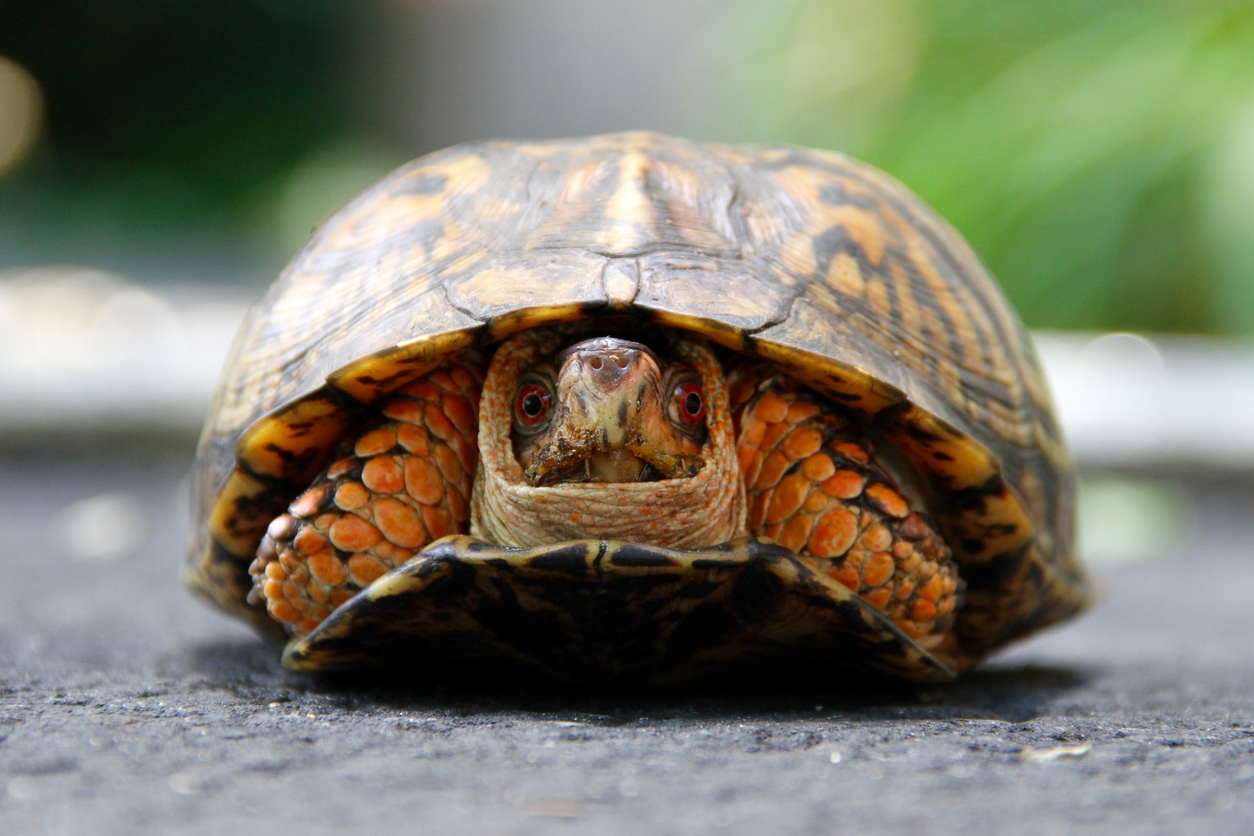
At first glance, the box turtle looks like a slow-moving snack. But this woodland wanderer is hiding one of the most impenetrable personal vaults in the animal kingdom. Unlike most turtles, which can only partially retract into their shells, the box turtle has a built-in hinge on its plastron—the flat bottom part of its shell—that allows it to seal itself completely shut. Once closed, even a determined raccoon can’t pry it open. Its shell is fused from spine, ribs, and keratin-covered bone, all curved into a dome that functions like a natural crash helmet. This tight design leaves no soft spots—just a compact, armored pod built for survival.
According to a structural analysis in The Journal of Experimental Biology, a box turtle’s shell can resist over 1,000 psi of pressure—that’s about what it takes to crack solid limestone, or more than seven times the bite force of an average dog. That means a 5-ounce turtle could survive the weight of a 250-pound adult stepping directly on it. In real-world rescues, turtles have even recovered after being clipped by car tires, thanks to the shell’s layered construction and ability to distribute force. Some conservation teams now use 3D-printed braces to help shattered shells heal—a testament to just how often these turtles take hits and bounce back. Their design hasn’t changed much in millions of years, and with armor this tough, it didn’t need to.
9. The Limpet – The Tiny Shell That’s Tougher Than Kevlar
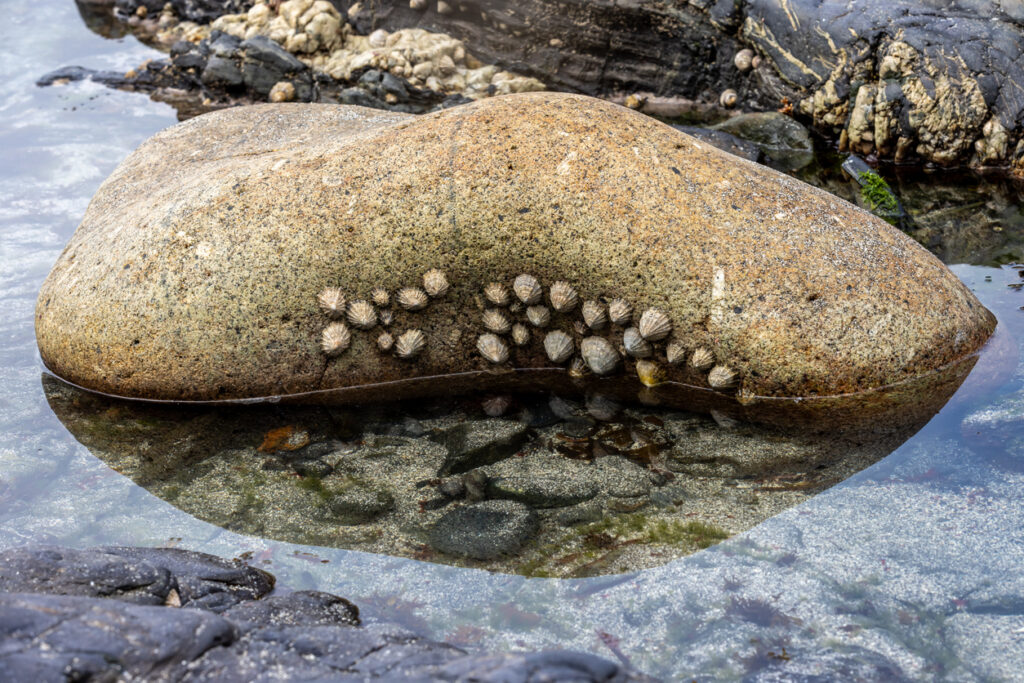
The limpet may look like a boring little bump on a rock, but it hides a superweapon inside its mouth. These unassuming mollusks cling to intertidal boulders where waves slam with hundreds of pounds of pressure, and they hold tight using a cone-shaped shell and an ultra-strong foot. But what makes them legendary isn’t their shell—their teeth. Each limpet has a radula lined with rows of microscopic goethite-reinforced teeth, designed to scrape algae off stone. Goethite is an iron-based mineral also found in rust, but here it’s arranged in such a fine matrix that the structure becomes flexible and nearly unbreakable.
Scientists at the University of Portsmouth measured the tensile strength of these teeth at up to 6.5 gigapascals—nearly 950,000 psi. That’s stronger than spider silk, five times tougher than Kevlar, and well beyond anything previously recorded in biological material. To put it in perspective, a strand of limpet tooth material the width of a human hair could theoretically hold up a car. The teeth don’t just resist snapping—they stay sharp after grinding against rocks for months. Limpets replace worn teeth constantly, growing new ones at the base of the radula like a conveyor belt. For a creature with no jaws, bones, or speed, the limpet survives by turning its lunch into a geology experiment—and it wins every time.
8. The Triton Snail – The Sea Monster with a Battle-Grade Shell
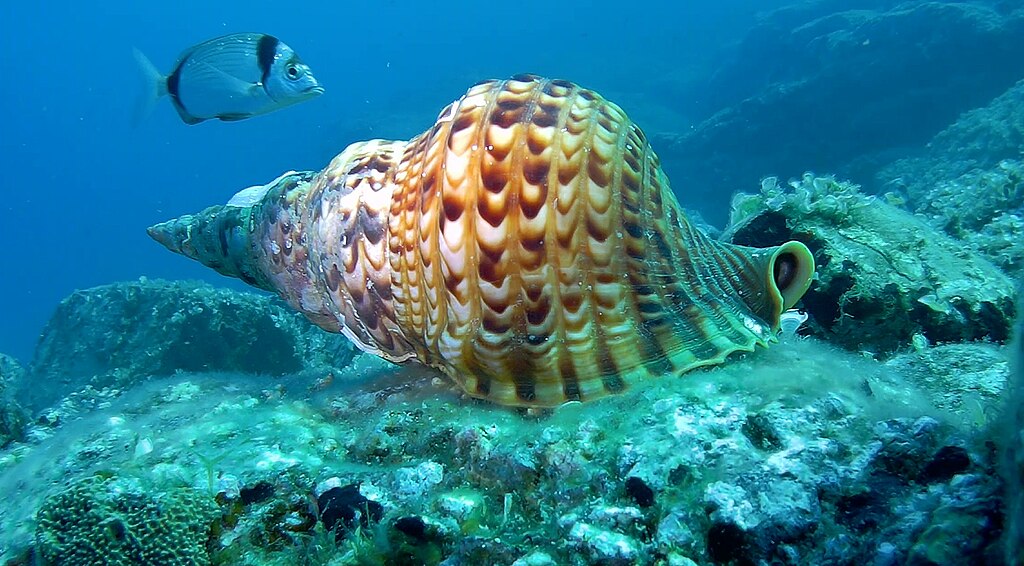
Forget delicate seashells—this mollusk is built for war. The triton snail (Charonia tritonis) lives in coral reefs and rocky seabeds across the Indo-Pacific, where it preys on venomous crown-of-thorns starfish. Its shell, often exceeding two feet in length, is a dense, spiraled fortress made of tightly packed calcium carbonate microplates. Unlike passive shell-dwellers, the triton uses its armor offensively, lunging at prey with a barbed proboscis and wrapping its foot around spiny, poisonous enemies, fully protected by a shell evolved to take punishment.
Marine biologists studying their hunting behavior note that triton snails regularly grapple with prey covered in venomous spines and sharp ossicles. Their shells are strong enough to withstand this contact without fracturing, enduring repeated impact from starfish thrashing and sea urchins jabbing. Its size and durability also make it virtually predator-proof. In ancient Pacific cultures, these shells were used as war trumpets—an apt metaphor for a creature that wears its aggression as armor. It’s slow, yes—but it’s built to take on venom and win.
7. The Armadillo – The Roll-Up Shield That Bounces Off Attacks
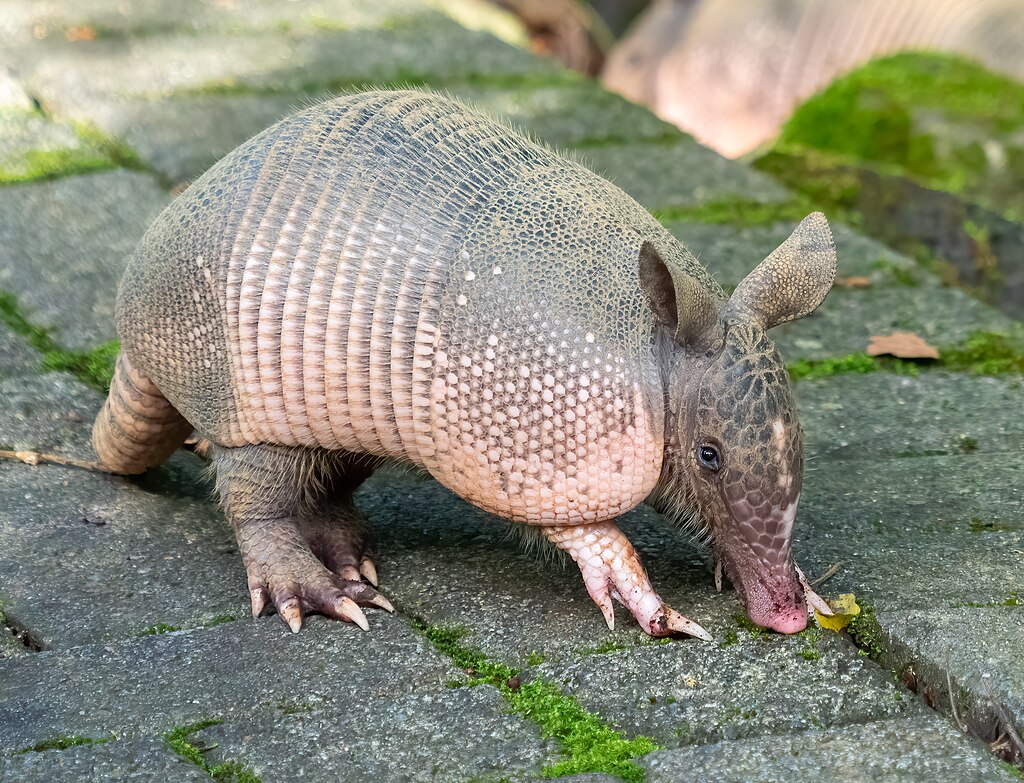
Armadillos don’t just wear armor—they are armor. These nocturnal diggers are wrapped in overlapping bony plates called osteoderms, each one coated in a tough keratin sheath, like hundreds of miniature helmets stitched together. The nine-banded armadillo, found across the southern United States, has enough flexibility in its armor to roll, stretch, and even curl into a tight protective ball. Each banded section is connected by flexible skin, allowing for surprising agility while still functioning as a suit of organic chainmail.
This armor isn’t just for show. Armadillos have survived dog attacks, snake bites, and even low-speed car strikes—earning a reputation in rural folklore as being nearly bulletproof. In some cases, bullets fired at close range have ricocheted off the shell, a phenomenon that has landed more than one shooter in the ER with a deflected round. Researchers at UC San Diego’s Jacobs School of Engineering have studied the armadillo’s armor for potential use in next-generation body armor, fascinated by how it blends rigidity and mobility. It’s not invincible, but in terms of natural armor with built-in shock absorption, the armadillo is one of evolution’s most practical designs.
6. The Helmet Urchin – The Surf-Zone Survivor That Shrugs Off Hurricanes
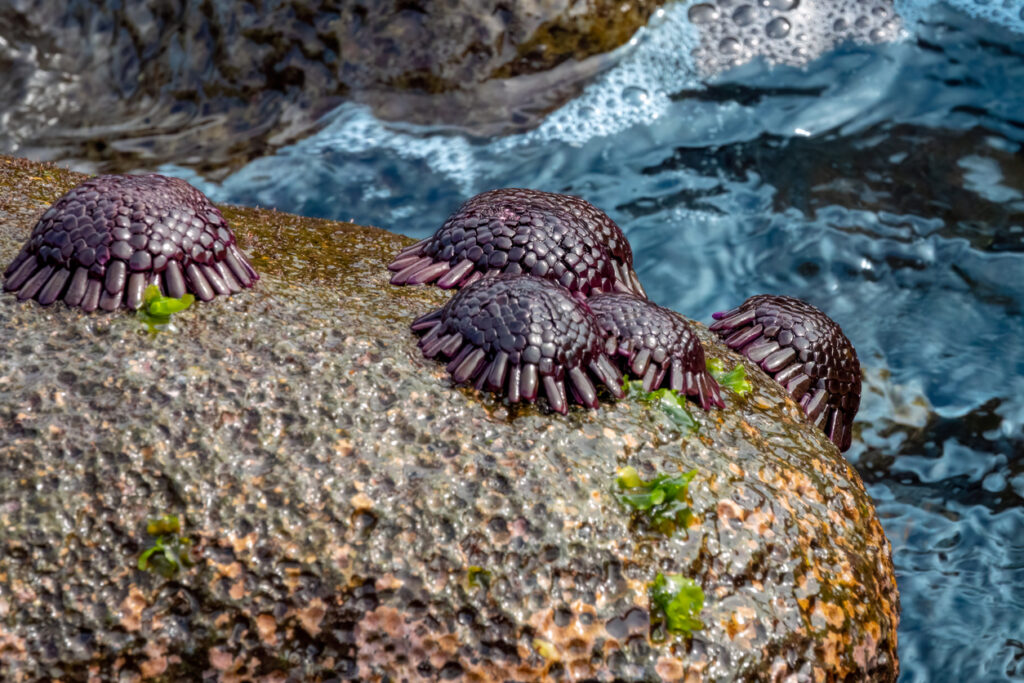
If you were designing an organism to survive in a washing machine full of rocks, you’d end up with the helmet urchin. Native to the pounding surf zones of the Hawaiian Islands, this squat, brick-shaped urchin lives where few creatures dare—just inches from the surface, where waves crash with thousands of pounds of force per square foot. Unlike spiky urchins, the helmet urchin has a smooth, stone-like carapace made of interlocking plates of calcite reinforced with flexible collagen, allowing it to resist breakage while clinging to volcanic rock.
In a field study led by researchers at the University of California, Santa Barbara, helmet urchins remained attached even during hurricane-level swells that displaced boulders nearby. The curved architecture of their shell dissipates hydrodynamic energy, much like impact-absorbing domes in architecture or sports gear. Some specimens have been found stuck to cliffside lava rocks after storms that wiped out entire tide pools. Without claws, jaws, or poison, the helmet urchin survives by simply refusing to budge—nature’s version of a suction-cupped bunker.
5. The Chiton – The Multi-Plated Tank With Magnetic Armor
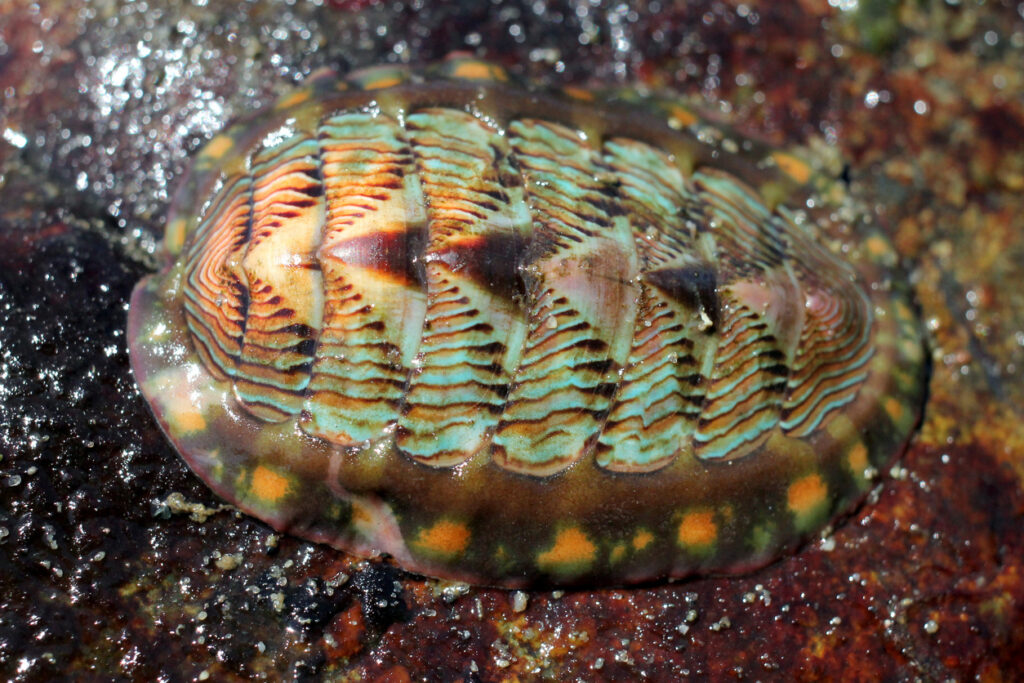
At first glance, a chiton looks like a living fossil—a slow-moving smear clinging to rocks in the intertidal zone. But beneath its unassuming appearance is one of nature’s most ingenious armored systems. Chitons are equipped with eight overlapping shell plates, each one made of aragonite and bound by a tough girdle that allows the creature to curl, twist, and survive relentless wave battering. Their segmented armor gives them both flexibility and full-body protection, like a roving tank that can cling to cliffs even as the tide pounds overhead.
But the real marvel lies in their teeth. Along their radula—like a conveyor belt of microscopic grinders—chitons grow iron-hardened teeth made of magnetite, a mineral so hard it’s used in industrial drill bits. A 2019 study published in Science confirmed that these are the hardest known materials produced by a living organism, capable of withstanding enormous wear and friction. That means chitons not only defend against impact—they chew through rock to feed, then regrow their tools when they wear out. They’re less than six inches long, but they’re armored, magnetic, and built for eternal survival.
4. The Diabolical Ironclad Beetle – The Bug That Laughs at Cars
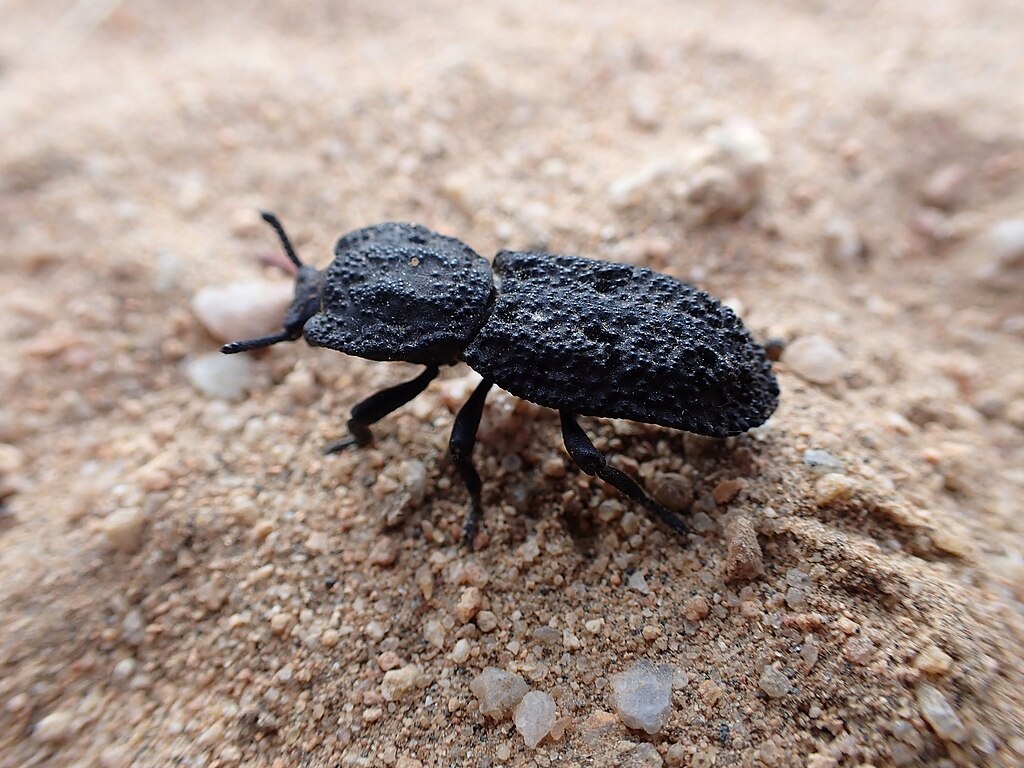
If anything in nature deserves the title “indestructible,” it’s the diabolical ironclad beetle. Native to the arid forests of the western United States, this beetle doesn’t fly or run fast, but it doesn’t need to. Its survival strategy is simple: never break. Its exoskeleton is a marvel of biological architecture, composed of interlocking plates of chitin arranged in a jigsaw pattern that can flex slightly without cracking. This layered design, with alternating orientations, dissipates stress across the beetle’s body instead of allowing it to shatter under pressure.
In a 2020 study published in Nature, engineers documented that the beetle can withstand compressive forces up to 39,000 times its body weight. That’s roughly the equivalent of a 200-pound man being crushed by the weight of 7.8 million pounds—and walking away. The beetle has been observed surviving being stepped on, pinched by bird beaks, and even run over by cars. Its secret lies in how its shell sections “stitch” together at the seams, resisting shear forces that would break almost any other bug. Military researchers and aerospace engineers have already begun modeling the beetle’s shell to develop fracture-resistant joints in aircraft. It’s not just tough for an insect—it’s redefining tough altogether.
3. The Dungeness Crab – The Edible Tank With a Hidden Secret
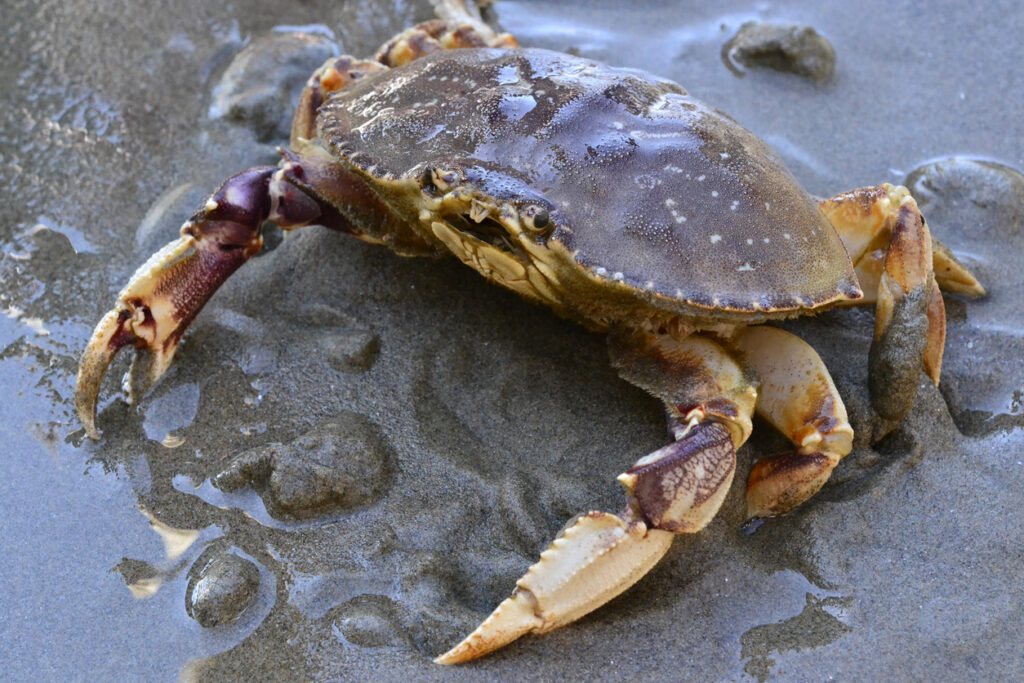
The Dungeness crab might be best known on dinner plates, but beneath that familiar shell is a suit of armor that would make a medieval knight jealous. This Pacific Northwest crustacean builds its exoskeleton from a multilayered cuticle reinforced with calcite and a touch of bromine, a rare chemical element that makes the shell unusually hard and resilient. Each section of the shell is lined with chitin fibers arranged in a twisted plywood pattern called Bouligand structure, which helps stop cracks from spreading. It’s the same strategy used in advanced body armor.
A study published in ACS Applied Materials & Interfaces revealed that Dungeness crab shells can withstand over 1,500 psi before failing, putting them in the same range as hardened plastic composites. Even more impressive? The crab sheds and regrows this entire suit multiple times throughout its life. During molting, it pulls out of its old armor, vulnerable for just days before re-hardening into a fresh, reinforced shell. That level of natural regeneration, combined with high compressive strength and structural complexity, makes the Dungeness one of the toughest (and most underestimated) armored animals on Earth.
2. The Pangolin – Nature’s Walking Chainmail
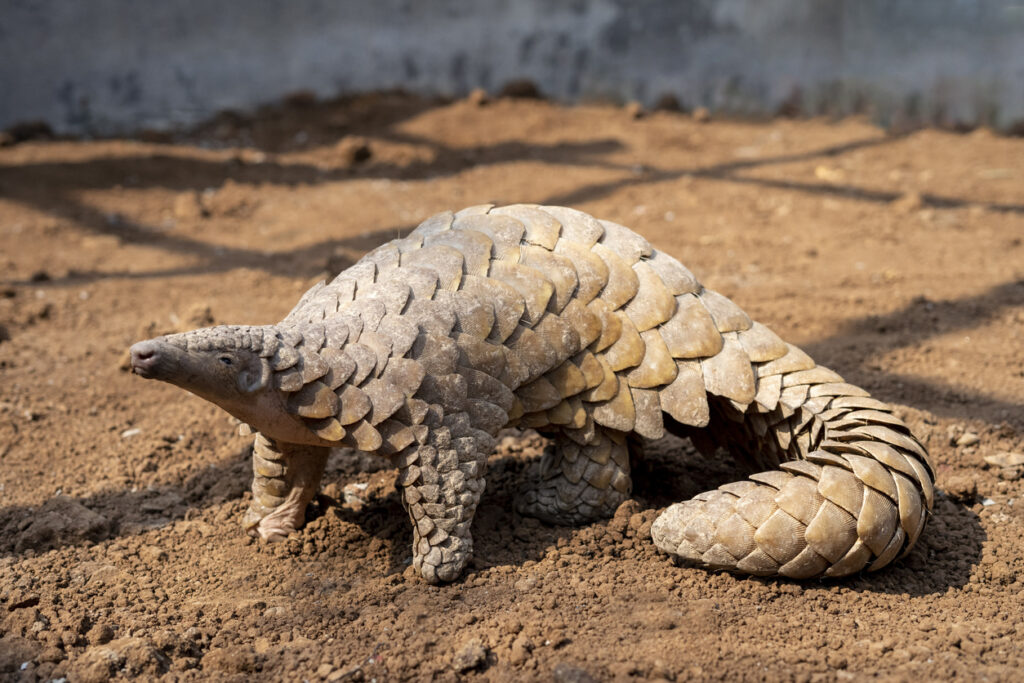
Pangolins don’t roar or charge—they curl. These solitary, insect-eating mammals are covered from snout to tail in overlapping keratin scales, the same material found in rhino horn and human fingernails, but layered like a living coat of armor. Each scale is sharp-edged and hard enough to deflect claws, teeth, and even machetes. When threatened, pangolins roll into a tight ball, tucking in their soft underbelly and transforming into a spiked, impenetrable sphere. For predators like lions, hyenas, and leopards, it’s like trying to bite a coconut covered in razor blades.
Researchers publishing in Acta Biomaterialia found that pangolin scales can resist compressive forces over 60 times the animal’s body weight, thanks to their layered microstructure and the elastic energy they can absorb. Unlike static armor, pangolin scales can shift slightly under pressure, allowing energy to disperse without cracking the protective barrier. It’s no wonder their scales are being studied as models for flexible, lightweight combat gear. These gentle creatures are among the most trafficked animals in the world—but biologically, they’re masterpieces of armor evolution. No other mammal wears a suit of armor quite like this.
1. The Queen Conch – Tougher Than Fiberglass, Nearly Bulletproof
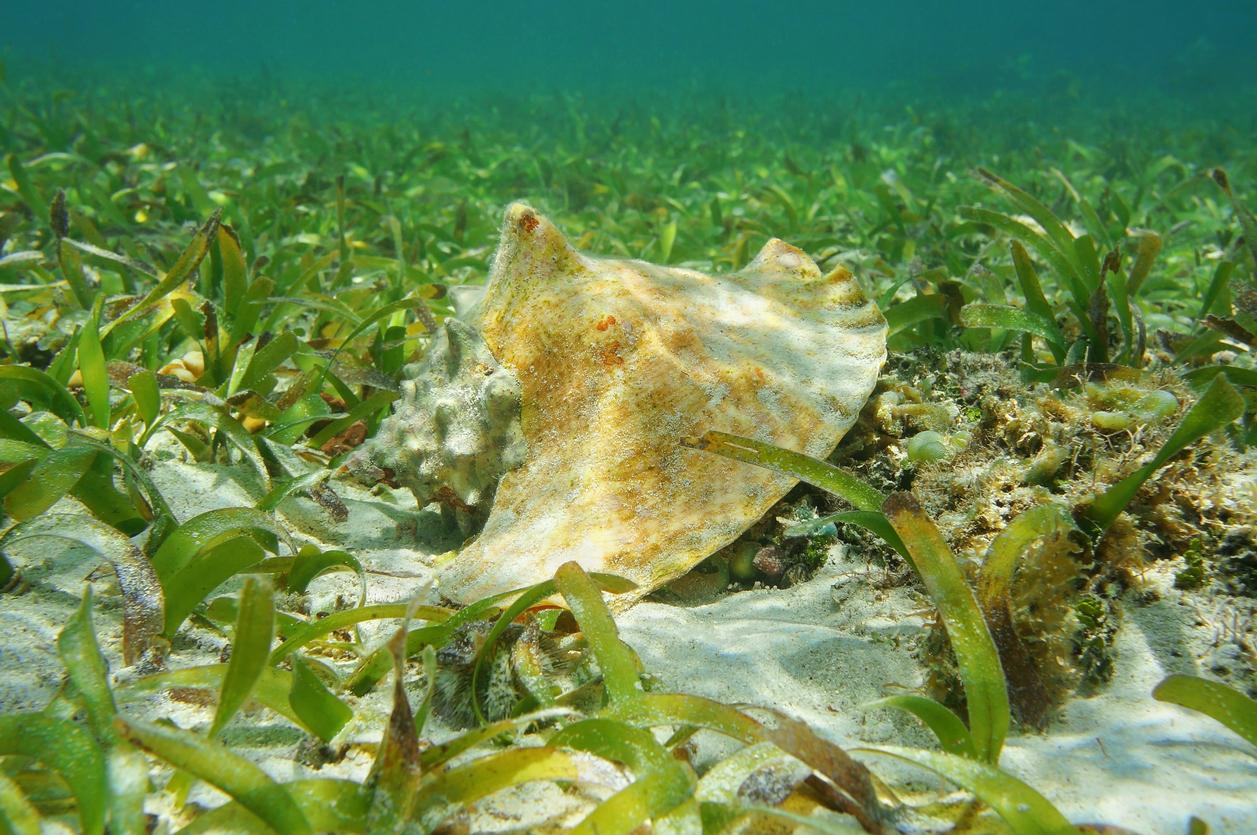
The queen conch doesn’t look like a top predator or prey. With its pastel pink spiral and lazy pace across the Caribbean seafloor, it might seem delicate. But its shell is anything but. Built from tightly packed aragonite crystals layered in a cross-lamellar pattern, the queen conch’s exterior is designed to stop cracks before they start. Each layer acts like a tiny shock absorber, redirecting stress away from critical areas and preventing fractures from spreading. It’s not just hard—it’s engineered for impact survival.
According to a materials study in Acta Biomaterialia, conch shells can withstand compressive forces of up to 218 megapascals—over 31,600 psi. That’s stronger than fiberglass, tougher than many ceramics, and comparable to the lower end of ballistic-grade composites. In lab simulations, the conch shell structure performed better than human-made materials under high-speed impact tests, inspiring researchers to mimic its design in next-generation body armor. Nature built the conch not for speed, but for survival—and in doing so, it may have helped humans take a step closer to making ourselves just as indestructible.
Some animals survive by hiding. Others flee. But these twelve creatures don’t flinch—they endure. Each shell on this list is more than protection; it’s a blueprint of survival, sculpted by millions of years of pressure, predators, and impossibly harsh environments. Whether layered with iron, stitched like armor, or packed tighter than fiberglass, these natural fortresses are among the toughest materials biology has ever produced.
And they’re not just passive shields. Some are weapons. Others rebuild themselves. A few inspired modern armor, aerospace design, and even combat gear. They remind us that nature has been solving impact resistance, flexural strength, and regenerative material design long before we ever learned to swing a hammer. In a world obsessed with speed and power, these creatures prove that sometimes, the real strength lies in staying still—and never breaking.


